
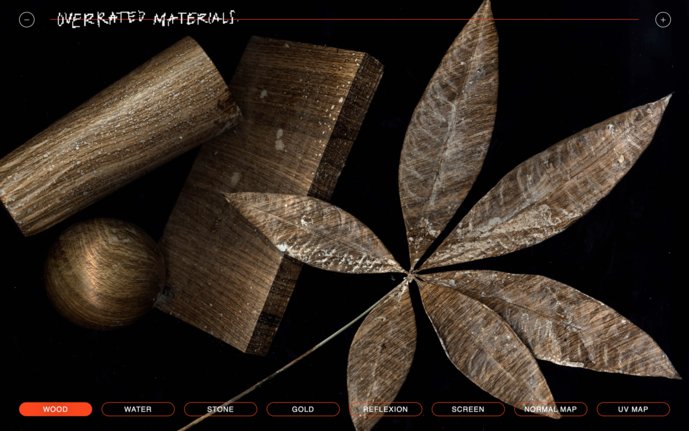
Screenshot (© Severin Geißler)

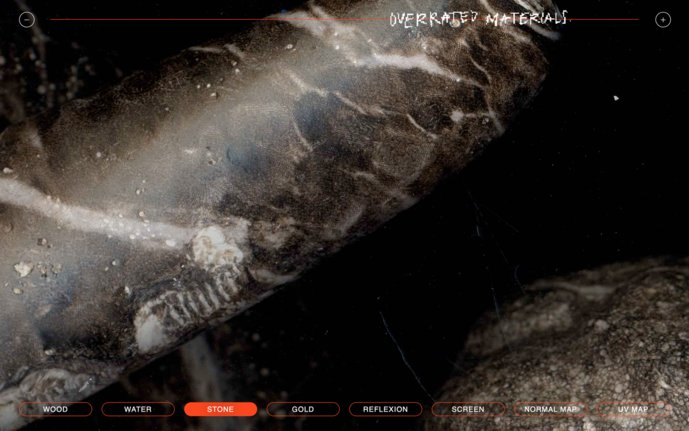
Screenshot (© Severin Geißler)

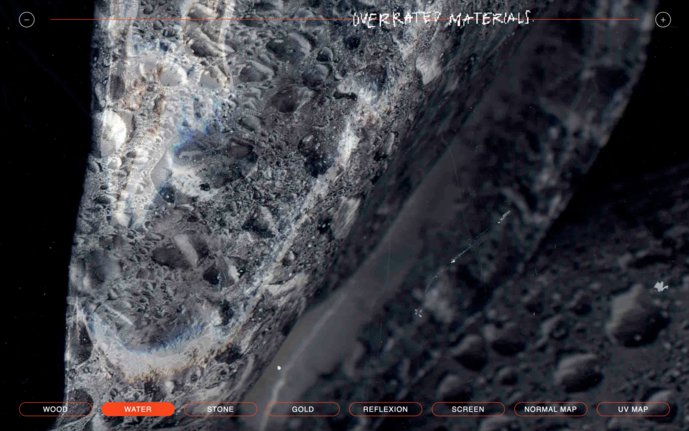
Screenshot (© Severin Geißler)


Screenshot (© Severin Geißler)


Screenshot (© Severin Geißler)

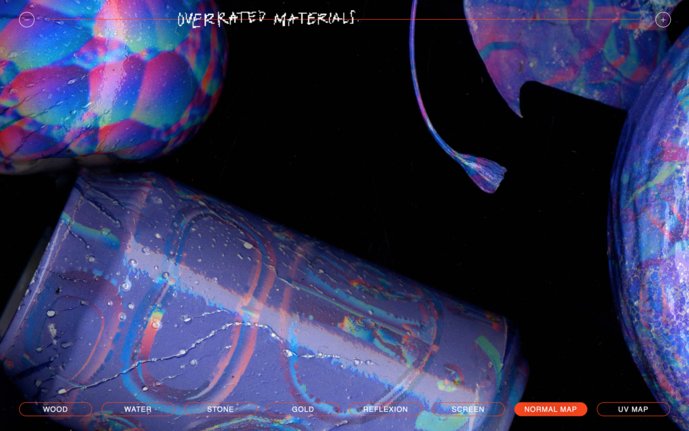
Screenshot (© Severin Geißler)

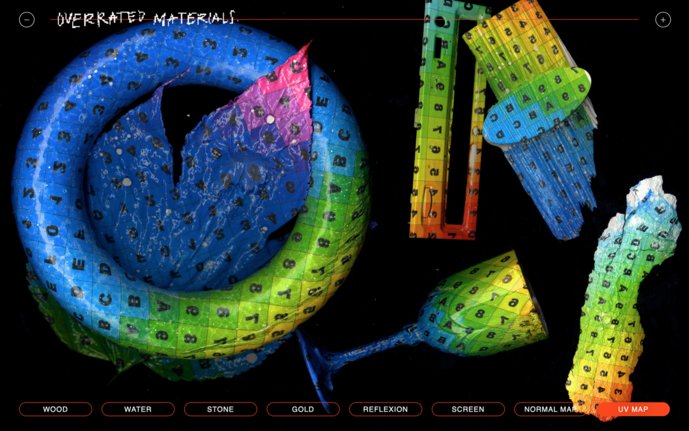
Screenshot (© Severin Geißler)
Without realizing it, we are surrounded in everyday life by renderings and CGI – computer-generated images. Technological progress today enables artificially created images that humans can no longer distinguish from a photograph. Inevitably, the question of the real arises. The relationship between materiality and surfaces is especially relevant in 3D renderings. What happens if surface and material are no longer bound together? This question is explored in the project Overrated Materials – a material experiment that transposes the methodology of rendering to the physical world to create speculative objects.
The digital method of image mapping, in which an image is projected onto a 3D object, is implemented in an analogue method by means of immersive printing. In the process, a two-dimensional image is printed on film, dissolved on a water surface, and finally an object immersed in the image. In doing so, the image organically surrounds the body, creating a new texture on the surface that covers the structure of the material.
Overrated Materials is a website that offers the visitor eight materials to choose from. These are based on the classic texture catalogs of popular 3D drawing programs: wood, stone, water and metal. In addition, there are images from the digital context such as UV maps, normal maps and screenshots, which are used during the rendering process in an intermediate step.
By clicking through the material selection on the website, you will see enlarged images, which appear like a hybrid between render and real photograph. Natural objects such as tree leaves are shown with a wooden surface, a colorful number grid covers a wine glass. The connection between materials and their surfaces in the physical world is dissolved.
Website, 8 scans, immersion print objects
Seminar project in seminar “Overrated Reality”
Tutors: Prof. Ivan Weiss and Prof. Michael Kryenbühl (Johnson Kingston)